Westport: Past, Present And Future - Part 4
An editorial series presented by Scoop Amplifier
Part 1 - WHERE - At
the Crossroads in Coaltown
Part 2 - WHO -
The Pain Of "Uncertainty"
Part 3 - WHAT -
Denniston's "Caviar" Of Coal?
Part 4 - HOW -
Hamish Bohannan's Hopes for Westport

The site of the proposed Escarpment Mine : 106 Hectares of the Denniston Plateau which offers the promise of jobs for 225 Westport based miners for seven years, between $1 and $1.4 Billion in export receipts (depending on whether the coal price recovers) and significant profits for shareholders.
Introduction: One way or another it’s a fact that the past, present and future of Westport and the Buller District is inextricably linked to the ground-covered seams and coal-fields on the lofty cloud-draped plateaus directly outside the township’s front door. On the cusp of a weather bomb that hit New Zealand on June 20, Scoop Amplifier paid a 3-day visit to this enduring part of the nation to begin to gain some on-the-spot perspectives into just how steep a battle the majority of Coasters are facing to find ways to tell the story of their intertwined environmental and economic prospects. This is part four in a five part Scoop Amplifier feature series.
Declaration: Scoop Amplifier's production, travel and logistical costs to and from Westport in order to produce this series were paid for by Buller Coal (owned by Bathurst Resources Limited). A strict protocol for the purposes of editorial freedom was agreed. Scoop Amplifier is a business unit of Scoop Media. Please send feedback on this story to WestportStory@scoop.co.nz
Hamish Bohannan's Hopes For Westport - The Westport Story,
part 4
Bathurst wants to be part of a sustainable future
for the Coast
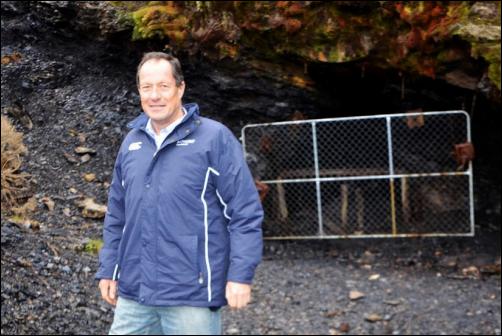
Bathurst Resources CEO Hamish Bohannan in the middle of the "Escarpment mining permit". Yesterday (8 August 2013) the planned mine was given a provisional green-light to proceed in an interim decision of the Environment Court. [ Scoop/BusinessDesk "Green light imminent for Bathurst's Escarpment mine" - 8 August 2012].
On the final day of Scoop Amplifier's three day field trip to Westport Scoop's Alastair Thompson and Stephen Olsen spent the day in the company of Bathurst Resources' CEO Hamish Bohannan, Corporate Affairs Manager Sam Aarons and Westport based Chief Geologist at Buller Coal Hamish McLauchlan.
The day began with an interview with Hamish Bohannan conducted at the office of Bathurst's Westport based mining subsidiary Buller Coal .
The subject matter of this interview was driven in large part by what we had found on the first two days of our trip, which is recorded in Part 1 ( Coaltown at the Crossroads ) and Part 2 ( The pain of "uncertainty" ) of this feature series.
We then headed back up to the Denniston Plateau in a Toyota Prado to view the planned site of the controversial and heavily contested "Escarpment" Mine project.
It was a very cold day but clear and is recorded in Westport Story Day 3 photo album.
Before we visited the Escarpment we paid a quick visit to Bathurst's operational "soft coking coal" Cascade Mine. This is on the eastern side of the Denniston Plateau. Like Escarpment - and indeed all the mining currently underway in the Buller - Cascade is an open-cast mine with large diggers and trucks. Because it is on the side of the hill it closely resembles a quarry.
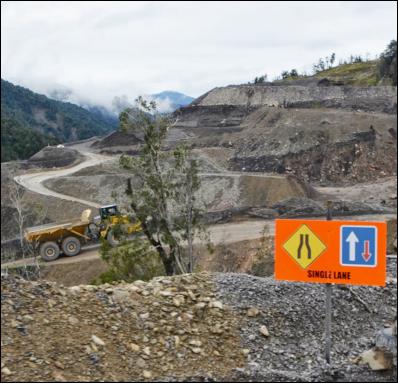
Bathurst Resources' "Cascade" soft coking coal mine.
To get there we had to drive past the now fully overgrown former town of Burnett's Face (made famous in the Denniston Rose novels of Jenny Pattrick). This companion town to Denniston was built by miners back in the late 19th Century in this most inhospitable of places - some say Burnett's Face was settled in an attempt to get away from the wind, but failed to achieve this objective.
We then returned to the town of Denniston where Bathurst has a coal transit station adjacent to the ruins of an old miners staff room and ( a rather long) community swimming pool.
From there we travelled south across the plateau to the site of Escarpment.
A 3D animation shows the Escarpment area. Commissioned by Bathurst Resources from VirtualViewLtd
A road winds up into the middle of the Escarpment area and on either side you can see glimpses of where the coal seem has been mined in the past. On either side of the valley there are high sandstone cliffs which will not survive the open cast mining project..
At the top there is a small clearing and the remains of some old buildings and mine workings - acid water is draining from these workings and running under a old cottage which appears to be remarkably well preserved in spite of the fact there is a stream running under it.
We stayed briefly in this spot to take a few photos as it was bitterly cold in a South Easterly wind which was heralding the arrival of the storm which later that evening did significant damage to Wellington's south coast.
Two interviews with Bathurst Resources CEO Hamish Bohannan By Alastair Thompson
Hamish Bohannan (57) is a bit of a renaissance miner. After starting at Imperial College London somewhat early at 17 with an intension of majoring in chemistry he changed course and ran away to Australia and South Africa, initially working in gold-mines.
His introduction to gold mining came via the explosives industry where he quickly found himself curious as to how the explosives were being used, and shortly after found himself underground.
After a year's cadetship working underground in South Africa he qualified and was able to take up a contract of his own. However before long, in his early 20s, he returned to London to complete his undergraduate studies. He transferred his major to Mining Engineering and graduating with distinction.
He has since received a Masters in Engineering Science from James Cook University, Queensland and an MBA from Deakin University Geelong.
After graduating he went back to Australia where he worked in several mines rising through the ranks of management. He spent seven years at the giant Mount Isa Copper Mine in Queensland as well as a considerable period in Tasmania. Eventually he received his first mine General Manager's job whilst still in his early 30s.
Ever since then, he says, he has been involved in "building mines and mining teams", which is what he is now trying to do here in New Zealand where his current intention is to build a new New Zealand mining company.
Hamish joined Bathurst as Managing Director in 2008. He began at Bathurst investigating prospects in the United States, but when the Great Financial Crisis struck he started looking elsewhere for opportunities for his company as the United States appeared to be at the center of the crisis in that period.
In the video interview below he explains how he was introduced to the mining opportunity that exists at Westport by New Zealand geologist and miner Geoff Loudon who eventually sold his L & M Mining assets to Bathurst.
Five years after starting at Bathurst it seems Hamish has adopted, and been adopted by, Westport.
At the airport as we left town in June it was clear that a large number of the locals flying in and out knew him and were keen to talk to him about how he and his company were getting on. He has become something of a local celebrity.
And as I sat down to interview him on Friday he was fizzing a little on account of the emails and photos being sent through from Westport of celebrations about the latest "interim decision" of the Environment court which has provided a provisional "green light" to the project.
Hamish Bohannan Second Interview - 8 August 2013, Bathurst Corporate Office, Wellington (For The Westport Story - Part 4)
PART ONE : Hamish Bohannan talks about his introduction to Westport; the implications of the latest judgment of the Environment Court; the special coal from the region and its likely price path, and introduces his ideas around developing a sustainable long term development plan for the Buller Region, financed by mining receipts.
PART TWO :
Hamish Bohannan continues discussing the idea of a
sustainable long term development plan for the Buller
Region, financed by mining receipts.
Bathurst has now completely tied its future to the town and its coal fields which have the attractive characteristics of being easily accessible, well served by transportation and potentially hugely valuable.
The most obvious evidence of Bathurst's commitment to Westport is in a $5million, huge ( currently empty ) covered coal loading shed built in the port area of Westport.
Earlier this year Bathurst decided to re-domicile ( i.e. move their company registration ) to New Zealand to provide further evidence of their commitment to the area.
Below you will find a report of the initial interview with Hamish Bohannan conducted in Westport on June 21st. This has been supplemented by a video interview (See youtube videos above) conducted with Hamish this past Friday, 9 August, a day after an interim decision of the Environment Court gave a provisional green light to the Escarpment mining project.
Hamish Bohannan First Interview - 21st June 2013, Buller Coal Office, Westport (For The Westport Story - Part 4)
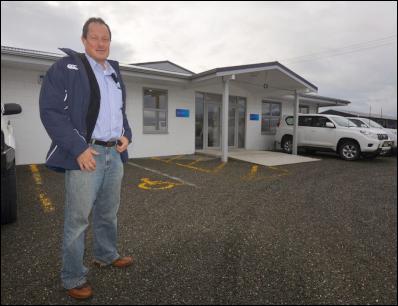
Hamish Bohannan outside the offices of Buller Coal in Westport
Environmental friendliness is a journey that everyone in society, including miners, is on according to Bathurst Resources managing director Hamish Bohannan.
“It wasn’t only mines, everything we did in the past was not environmentally friendly,” he says.
“It doesn’t matter if it was a tannery, it doesn’t matter if it was a fish plant, everything just got chucked away. But now we’ve all become environmentally aware, and I think the mining industry has been on that curve too.”
However, according to Bohannan, the public has an entrenched view of old school large scale mining, and this is part of the legacy that Bathurst is having to deal with as it looks to build a business exporting the West Coast’s metallurgical coal for use by the world’s high quality iron and steel makers.
Bohannan says that for Bathurst mining is all about planning and people.
“A coal field is, I believe, a resource for the community that through careful management can be a cornerstone for building sustainability in that community,” he says.
“The interesting thing about resources is, that by definition, they are finite. So, it’s just as if you get an endowment from your Great Aunt. When she passes away you’ve got two choices – you can have a party and spend it and it’s all gone. Or, you can invest it wisely either in infrastructure or a mortgage, and use that resource for long term gain.”
Bohannan argues that far from being a here today, gone tomorrow company, Bathurst’s development plans for the Buller have the potential to be a 50 year economic and environmental exercise that could provide the time, people and means for other and more diversified businesses to emerge in the sparsely populated and developed Northern West Coast.
Of an estimated 200 million tonnes of coal believed to be left in the Buller, Bathurst has a target extraction of about 160 million over this period and would hope to reach peak production levels of around 4 million tonnes a year. This is substantially more than Solid Energy has produced at its peak at Stockton and would most likely require the use of both shipping ( out of Westport Port to Taranaki ) and coal trains to the Port of Lytellton.
At this level of coal production you are talking half a century of mine life in the Buller, and employment of several hundred miners and environmental remediation workers. The key to delivering this, according to Bohannan, will be planning.
“And that’s what I mean about planning,” says Bohannan. “We need to be investing the returns from what’s happening there to create other opportunities that will last forever."
The buildup of tourism ventures such as the Denniston Experience is one such example, as is the development of the Westport Port.
“The Port does a fantastic job, but they’re running on the smell of an oily rag,” says Bohannan. “It has nearly died. Let’s get it alive. The trick to all this is getting that value, that bank account - which is what coal is - transferred from being a deposit into something that is providing sustainability for the community. At the moment I’d argue that what we have on the Coast is not sustainable.”
For that to change the Coast needs to have a vision about what it wants.
The area has a small population, and a lot of little pieces of economic activity, but none of them are large enough to help develop an under-utilised port says Bohannan.
“You need something like a coal field to provide that initial momentum, to push through that initial economic inertia, to get past that hurdle,” he says. “Then you get a certainty of timeframes to encourage investment.”
The potential offered by Buller coalfields set up with a 50 year vision is to also provide an example of "a best practice test case" to learn how to do things successfully for the environment also, says Bohannan.
“Part of the criticisms we’ve had in court involves claims that rare giant carnivorous snails [Powelliphanta Augustus] will become extinct,” he says.
“We say the snails will recover in the Vegetation Direct Transfer [ VDT ] zones being created by remediation and rehabilitation work.
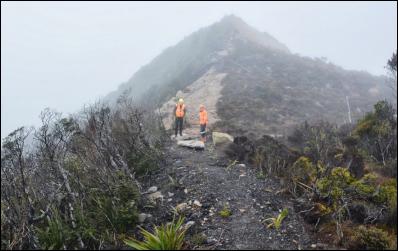
An example of a Vegetation Direct Transfer area at Solid Energy's Stockton Mine
"However right now there’s no current proof to present on either side for this small proportion of the plateau. Why not fund postgraduate research to study and learn and to work out ways to get better recoveries and improved post mining environments?”
“The reality is, and we do it all over the planet already, you can take these populations and create situations where they breed up and the community strengthens.”
Bohannan is also slightly bemused by environmental groups not wishing to have Bathurst mine on the plateau. That being the case, the acid drainage problem from older mines will not be corrected, the underground fires will continue to burn, weeds will take over the old workings and mine and the area will still have the look of a refuse pit.
Having Bathurst onboard is the only real economic means to confront these challenges he says.
The other bigger anti-mining viewpoint that Bohannan is keen to debate is the idea that mining shouldn’t take place on the plateau because of the contribution that coal makes through its carbon dioxide contribution to the atmosphere.
“Without a doubt climate change is going on,” he says. “I believe that’s a bit like the fact that smoking and health aren’t a good mix. We humans are having an impact.”
However, not all societies are equal around the world, and they’re trying to obtain a better standard of living and life for everyone in their community.
“If we want to get people on this planet who have names and heartbeats and families and loved ones, so that everyone gets a minimum quality of life, then they’re going to need metals, they’re going to need energy, and they’re going to want to have fresh water,” Bohannan says.
“And it’s a simple equation to work that back into how much power we need. And then we’ve got to work out where it’s going to come from, and then we’ve got to work out how much CO2 is that going to be produced.
“Not the other way round, starting with, you’ve got to get rid of coal, and we’re alright Jack, and you guys in less developed parts of the world you just stay as you are.
“People who protest about climate change up on the plateau have driven there in their cars, they spend a day getting cold, wet and miserable, and then go back and have a hot shower, perhaps get a cold beer out of the fridge. There’s a disconnect.”
Bohannan says that steel and cement production are contributors to CO2 production, but that today, we can’t do without them, and can’t expect developing countries to do without them as they improve their own standards of living.
Given that steel is going to be made whether or not the West Coast’s metallurgical coals are used in its production anyway, but that such coals actually lower the overall CO2 emissions if used, Bohannan is adamant that it should be exploited.
“We have a resource that can be well-managed,” he says. “It is a resource for the West Coast and wider New Zealand that can be a cornerstone for building sustainability in our community.”
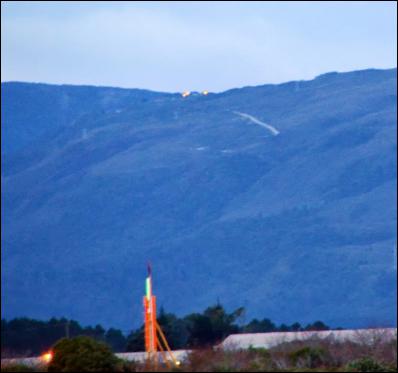
Denniston as viewed from the Westport airstrip as the Scoop Amplifier team departed town.
(Story Ends)
This story has been published in four parts starting July 31st 2013.
Declaration: Scoop Amplifier's production, travel and logistical costs to and from Westport in order to produce this series were paid for by Buller Coal (owned by Bathurst Resources Limited). A strict protocol for the purposes of editorial freedom was agreed. Scoop Amplifier is a business unit of Scoop Media. Please send feedback on this story to WestportStory@scoop.co.nz




 Binoy Kampmark: The Inevitable Souring - Elon Musk Falls Out With Donald Trump
Binoy Kampmark: The Inevitable Souring - Elon Musk Falls Out With Donald Trump Ian Powell: Postscript On Ethnic Cleansing, Genocide And New Zealand Recognition Of Palestine
Ian Powell: Postscript On Ethnic Cleansing, Genocide And New Zealand Recognition Of Palestine Gordon Campbell: On Why Leakers Are Essential To The Public Good
Gordon Campbell: On Why Leakers Are Essential To The Public Good Ramzy Baroud: Global Backlash - How The World Could Shift Israel's Gaza Strategy
Ramzy Baroud: Global Backlash - How The World Could Shift Israel's Gaza Strategy DC Harding: In The Spirit Of Natural Justice
DC Harding: In The Spirit Of Natural Justice Martin LeFevre - Meditations: Animal Encounters During Meditative States
Martin LeFevre - Meditations: Animal Encounters During Meditative States